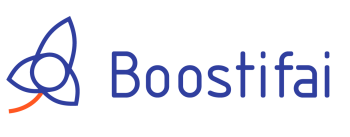Overview
Introduction to ChatGPT
ChatGPT is an advanced language model developed by OpenAI that has revolutionized conversational AI. It uses deep learning techniques to generate human-like responses in natural language conversations. With its ability to understand context and generate coherent and relevant responses, ChatGPT has opened up new possibilities for applications in various domains. Conversational AI has become a crucial aspect of many industries, enabling businesses to provide personalized customer support, create virtual assistants, and facilitate language translation services.
Benefits of Conversational AI
Conversational AI, powered by ChatGPT, offers numerous benefits in various industries. It enables businesses to provide 24/7 customer support through automated chatbots that can handle customer queries and provide instant responses. This not only improves customer satisfaction but also reduces the workload on support teams. Additionally, conversational AI can be used to develop virtual assistants that assist users in tasks such as scheduling appointments, answering questions, and providing personalized recommendations. Furthermore, it has the potential to revolutionize language translation, allowing for real-time translation of conversations between individuals speaking different languages. The versatility and efficiency of conversational AI make it a valuable tool for enhancing user experiences and streamlining operations across industries.
Evolution of ChatGPT
The evolution of ChatGPT has been a remarkable journey in the field of conversational AI. Starting from its predecessor, GPT-2, ChatGPT has made significant advancements in terms of its architecture and training process. With the introduction of the Reinforcement Learning from Human Feedback (RLHF) technique, ChatGPT has become more capable of generating coherent and contextually relevant responses. However, it is important to acknowledge the limitations of ChatGPT, such as its tendency to produce incorrect or biased information. These limitations highlight the need for further research and development to enhance the performance and reliability of ChatGPT.
Understanding ChatGPT

Architecture of ChatGPT
The architecture of ChatGPT is based on a transformer model that utilizes self-attention mechanisms to capture contextual dependencies in the input text. It consists of multiple layers of self-attention and feed-forward neural networks, allowing it to process and generate responses. The model is trained using a large dataset of paired conversations, where the input is the dialogue history and the output is the next response. However, one limitation of ChatGPT's architecture is that it does not have explicit memory, which can sometimes result in inconsistent or incorrect responses. Despite this limitation, ChatGPT's architecture enables it to generate coherent and contextually relevant responses, making it a powerful tool for conversational AI.
Training Process
The training process of ChatGPT involves two main steps: pretraining and fine-tuning. In the pretraining phase, the model is trained on a large corpus of publicly available text from the internet. This helps the model learn grammar, facts, and some reasoning abilities. However, it may also pick up biases and offensive language present in the data. The fine-tuning phase is where the model is further trained on a more specific dataset, carefully generated with the help of human reviewers. These reviewers follow guidelines provided by OpenAI to review and rate possible model outputs. The feedback from reviewers is used to improve the model's performance and make it safer and more reliable. The training process is iterative, with multiple rounds of fine-tuning to continuously improve the model's capabilities and address any issues that arise.
Limitations of ChatGPT
Despite its impressive capabilities, ChatGPT has a few limitations that need to be considered. Firstly, it may generate responses that sound plausible but are factually incorrect or misleading. This can be attributed to the model's lack of real-time fact-checking. Secondly, ChatGPT may exhibit biased behavior as it learns from human-generated data, which can contain inherent biases. Efforts have been made to mitigate this issue, but it remains a challenge. Lastly, ChatGPT may struggle with understanding context and maintaining coherent conversations, often providing responses that are inconsistent or nonsensical. These limitations highlight the need for continuous improvement and careful deployment of ChatGPT in real-world applications.
Applications of ChatGPT

Customer Support
ChatGPT has proven to be a game-changer in the field of customer support. With its ability to understand and respond to customer queries in a natural and conversational manner, businesses can provide 24/7 support without the need for human intervention. ChatGPT can handle a wide range of customer inquiries, from basic troubleshooting to complex problem-solving. Additionally, it can assist support agents by suggesting predefined responses and providing real-time information. This not only improves the efficiency of customer support but also enhances the overall customer experience.
Virtual Assistants
Virtual assistants powered by ChatGPT have become an indispensable tool for individuals and businesses alike. These AI-powered assistants can handle a wide range of tasks, from scheduling appointments and sending reminders to providing personalized recommendations and answering queries. With their ability to understand natural language and context, virtual assistants offer a seamless and intuitive user experience. They can also be integrated with various platforms and devices, making them accessible and convenient. ChatGPT enables virtual assistants to have more engaging and human-like conversations, enhancing their effectiveness in assisting users.
Language Translation
Language translation is one of the key applications of ChatGPT. With its powerful natural language processing capabilities, ChatGPT can accurately translate text from one language to another. This opens up a world of possibilities for businesses and individuals who need to communicate across language barriers. Whether it's translating documents, websites, or even conversations in real-time, ChatGPT can provide fast and reliable translations. Accuracy, efficiency, and contextual understanding are some of the strengths that make ChatGPT a valuable tool for language translation.
Conclusion

The Future of Conversational AI
The future of conversational AI holds immense potential for transforming various industries and enhancing user experiences. With the advancements in ChatGPT and other conversational AI models, we can expect more sophisticated and natural interactions between humans and AI systems. This opens up exciting possibilities for applications such as virtual assistants that can understand and respond to complex user queries, customer support systems that provide personalized assistance round the clock, and language translation tools that break down language barriers. However, along with these opportunities, there are also challenges to address, including the risk of bias in AI-generated responses and the need for robust ethical guidelines. As society continues to embrace conversational AI, it is crucial to ensure responsible and inclusive development to harness the full potential of this technology.
Challenges and Opportunities
While ChatGPT has shown immense potential in revolutionizing conversational AI, it also faces several challenges and provides numerous opportunities for improvement. One of the main challenges is the issue of bias in the generated responses, which can lead to misinformation or inappropriate content. Another challenge is the lack of context understanding, as ChatGPT may generate responses without fully comprehending the conversation history. Additionally, there is a need to address the ethical implications of using AI in conversations, such as privacy concerns and the potential for misuse. However, these challenges present opportunities for further research and development to enhance the capabilities of ChatGPT and ensure responsible use of AI in conversational applications.
Impact of ChatGPT on Society
ChatGPT has the potential to revolutionize society in various ways. With its advanced conversational capabilities, it can greatly enhance communication and interaction between humans and AI systems. This opens up new possibilities for improving customer support, creating virtual assistants that can assist with daily tasks, and facilitating language translation. However, the widespread adoption of ChatGPT also raises concerns about ethical implications and the potential for misuse. It is crucial to address these challenges and ensure that the deployment of ChatGPT aligns with ethical guidelines to maximize its positive impact on society.





